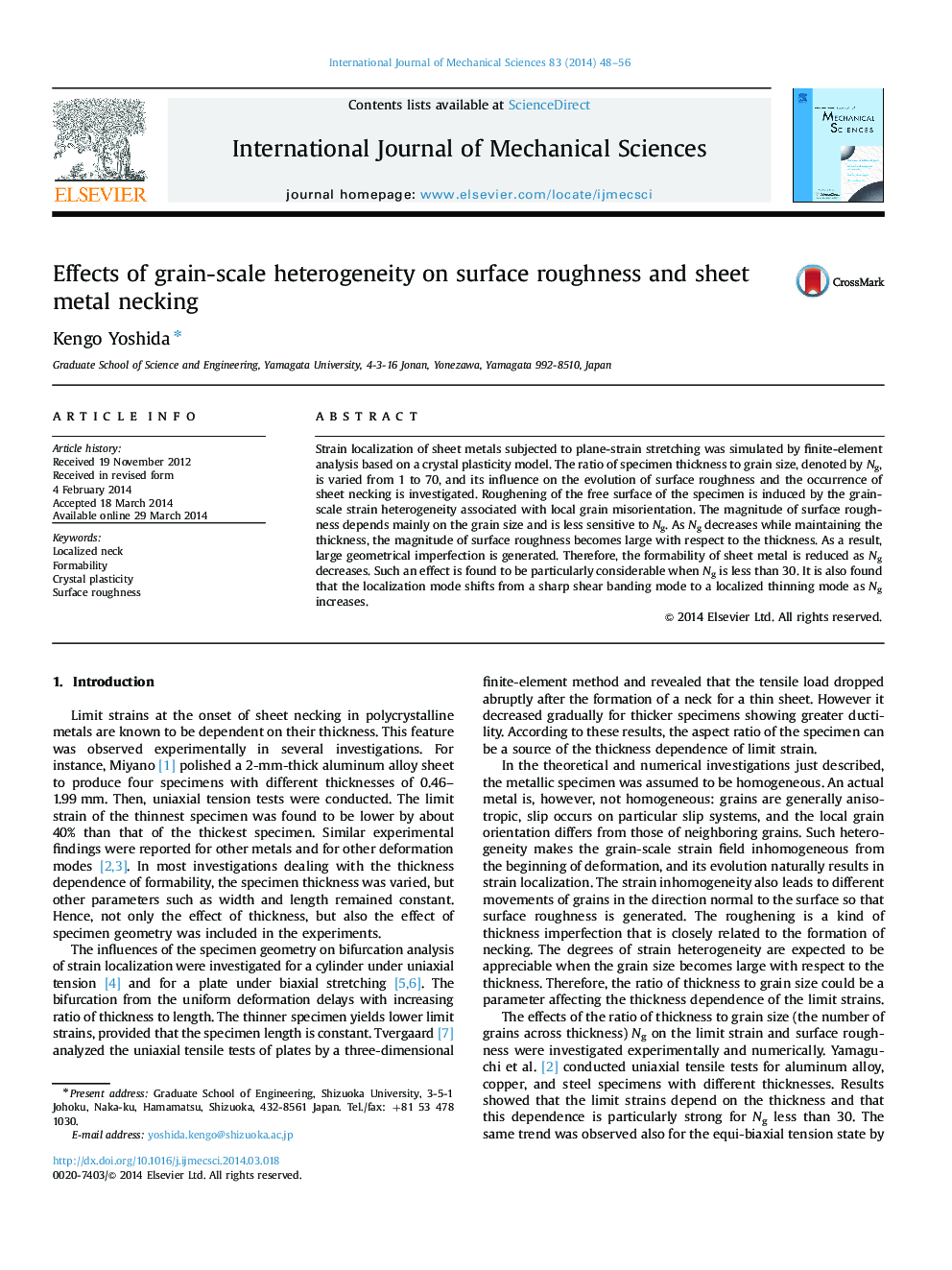| Article ID | Journal | Published Year | Pages | File Type |
|---|---|---|---|---|
| 783533 | International Journal of Mechanical Sciences | 2014 | 9 Pages |
•Development of surface roughness and strain localization in polycrystalline sheet metal is analyzed.•Grain-scale heterogeneous deformation is simulated by means of crystal plasticity based finite element method.•The effect of the number of grains across thickness on formability is analyzed.
Strain localization of sheet metals subjected to plane-strain stretching was simulated by finite-element analysis based on a crystal plasticity model. The ratio of specimen thickness to grain size, denoted by Ng, is varied from 1 to 70, and its influence on the evolution of surface roughness and the occurrence of sheet necking is investigated. Roughening of the free surface of the specimen is induced by the grain-scale strain heterogeneity associated with local grain misorientation. The magnitude of surface roughness depends mainly on the grain size and is less sensitive to Ng. As Ng decreases while maintaining the thickness, the magnitude of surface roughness becomes large with respect to the thickness. As a result, large geometrical imperfection is generated. Therefore, the formability of sheet metal is reduced as Ng decreases. Such an effect is found to be particularly considerable when Ng is less than 30. It is also found that the localization mode shifts from a sharp shear banding mode to a localized thinning mode as Ng increases.
